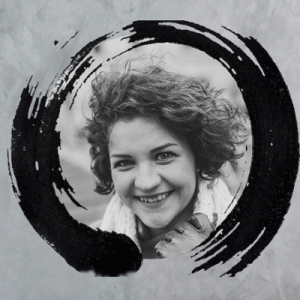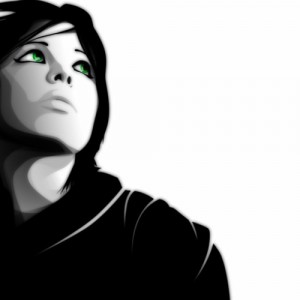Nicola Lambert, my partner, has been running TNT since my resignation in 2015. Once a month, Nicola invites new students to our apartment to listen to, think about and discuss Salsa music; we believe that all new students should be exposed to Salsa music and have Salsa music demystified as soon as possible. We do not think that you should learn partner work technique first and music afterwards, instead, you learn all the pillars of Salsa in a holistic fashion as they are complementary; Music, Body Movement, Footwork, and Partnerwork should be learned in tandem to get the best possible results.
These sessions are normally 3-4 hours long and cover a wide breadth of exercises. In this article, I will discuss the concept of music driving movement and more importantly the missing link, emotions.
Note: There are many ways to inspire dancers to listen to, enjoy and, importantly, make Salsa music the bedrock of their dancing. Unfortunately and too often, I see music being an afterthought in classes or taught to dancers after too many years and muscle memory development.
Music in Salsa Classes
A lot of Salsa classes try to get students dancing as soon as possible; we live in an instant gratification society and, from my experience in Salsa, students do not have a lot of patience. Because of this, instructors skip music and teach students a framework of counting to a beat, 123 567, and then get the students to learn to lead and follow partner work; this is highly effective.
Once the students get used to using this counting framework, they are empowered to learn rapidly and enjoy social dancing. This becomes very addictive and a long journey (or culture) of hoarding material begins and does not stop until they hit a wall in their learning; this is when I see music becoming desirable. At this point, I see dancers learning music and then trying to retrofit their moves to fit it. This can prove extremely challenging as it is cutting out a key ingredient, emotion.
Note: Salsa is many things to many people and you can enjoy it in whatever way you want to. What I have seen is that musically aware dancers are becoming increasingly annoyed, and frustrated, when dancing with musically silent dancers. When you become musically aware, you will feel the ebb and flow of the music, your body will be moving to the nuances of the music, the intricacies of it, and therefore when someone is rushing you through, you just want to scream.
Our Sessions
I want these sessions to be informal as they also allow us and the students to get to know each other better. We start by talking about the various instruments within a typical Salsa band and loosely group them into the rhythm section (Congas, Bongos, Piano, Bass, Timbales, Cowbell), the non-rhythm section (Vocals, Brass, Guiro, Maracas) and the Clave which ties them all together.
Once we understand the roles of the instruments I then use an app (Salsa Rhythms) to play the individual sounds in isolation. I then go through some exercises to help the students fine-tune their ears and get them to focus on listening. For example, having 5 instruments playing and asking them to identify them, or having 10 instruments playing and then removing one and asking the students to identify the instrument. This is all about awareness of the music and instruments.
Once our student’s ears are ready, I will then play each instrument individually and ask each student several questions:
- Give an Emotion, for example, Happy, Sad, Excited.
- Give a Characteristic, for example, Heavy, Light, or Sharp.
- Give a Body part, for example, Hands, Feet, or Shoulders.
Then we group them together to see what we get, for example:
- Clave makes me Serious with a Sharp sound and makes me want to move my Hands.
- Timbales makes me Angry with a Strict sound and makes me want to move my Feet.
- Cowbell makes me Annoyed with a Heavy sound and makes me want to move my Head.
Every student will respond to music differently, but it is amazing to see students starting to appreciate how music can guide your dancing. You can try these exercises yourself and see the results.
Note: To teach a class, making it fun and engaging is extremely challenging. I have personally been experimenting with teaching music-based classes for the past 5 years and it does take practice, making mistakes and analysing yourself to get the right format for you.
Impact
After only a single session our students, though still early on their journey, will have an appreciation for Salsa music and a framework for developing their music understanding; this opens many doors and is a catalyst for the most important thing any Salsa teacher can do, encourage new Salsa dancers to love the music.
This also manifests in our student’s dancing as they are now trying to move various body parts, although unpolished, to Salsa music. This is a massive win for a teacher because after a few years, through listening to, understanding, and experimenting with dancing to Salsa music they will develop their own unique style.
Note: The only bad style you can have is someone else’s. There are a lot of people trying to copy their idols and while this is good for motivation, this does not inject freshness, uniqueness and creativity into the world of Salsa, and for Salsa to thrive, this is required.
Summary
Whether you are a student or an instructor I hope you find this article very interesting. The world of Salsa is growing in numbers and there is an emerging community of dancers who are musically aware and only want to dance with people of the same mindset.
There is no reason why one cannot become musically aware, as in my opinion, it will make your journey of Salsa far more interesting and make you a better dancer. Being a Dancer in my mind is being able to move to music, the better you understand music the better you can move to it, hence the better the dancer.
I hope you enjoy this read. I would love to hear your comments and if you find this valuable please share this article.





Leave a Reply